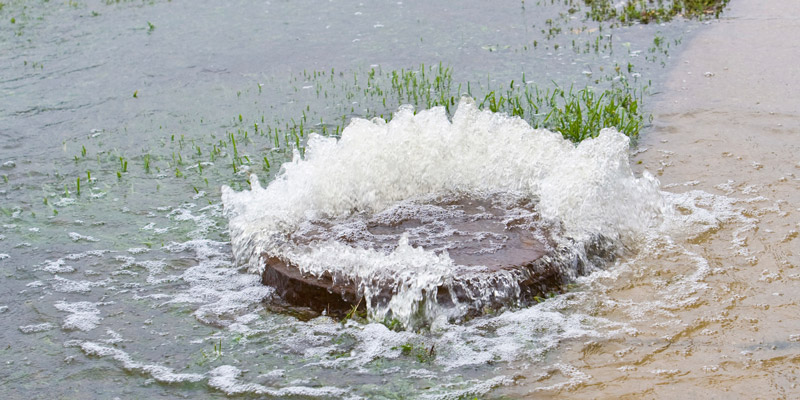Case Studies in Climate Change Impacts and Economic Adaptation for Water Infrastructure: Victoria, Fraser River Basin, Niagara and Montreal
Principal Investigator - Mohammed Dore, Professor, Brock University (2005-2007)

Challenge
With the predicted warming of the Earth’s climate, scientists routinely use General Circulation Models (GCMs) to predict the impacts of increased temperatures. However, these models differ in their precipitation projections, which can have dramatic implications. In North America, for example, a wetter climate is projected in the future, yet this generalization hides a great deal of variation. On the west coast, Victoria is expected to become very dry in the summer and wet in the fall and winter with similar variability expected for the Fraser River Basin. Meanwhile in Niagara, there has been an observed increase in precipitation with increased variance, which reflects more extreme weather events.
In Canada, GCMs are further hindered by a limited number of coarse grid-boxes, which do not consider any variability within grids. Thus, there is a need to “downscale” GCM projections in Canada to reflect local topographic features that strongly influence local precipitation. The project explored and developed a variety of empirical downscaling methods to estimate a number of “100-year” precipitation projection scenarios for Victoria, the Fraser River Basin, Montreal and Niagara, all of which are vulnerable to climate change.
Project
Climate, streamflow and precipitation data covering the period from 1961-1990 were collected and used to calibrate hydrologic models. The ability of the calibrated model to perform under changing climatic conditions was tested, then a more vigorous cross-validation was performed by transferring optimized parameters between two of the study regions to provide a more stringent test of the model’s reliability. GCM projections covering the 30-year time period were downscaled using a variety of methods, such as statistical downscaling.
An important research task was to determine whether the different downscaling methods led to convergent projections. The methodology was applied to projected climate scenarios of 7 GCMs that represent mid-range conditions for different climate scenarios. The projected impacts were then compared to baseline and forecast periods to determine which approaches should be adopted and transferred to other geographic regions of similar climate. Finally, future optimal adaptation for the present water infrastructure of the four case studies was determined.
Outputs
- Development of a decision support tool, which has been made publicly available as free-ware. The project also extended the development of the researchers’ previously published downscaling method by incorporating statistical forecasting tools. This model is also available as freeware.
- Development of a generalized template for water utilities, regional bodies and private corporations to build the impacts of climate change and adaptation costs into their Strategic Plans.
Throughout the course of the project, a number of presentations and publications on hydrologic modeling and climate-related impact assessments were produced, of which a select few are listed below.
Presentations
- Statistical Downscaling Method for Simulating Daily Precipitation and Extreme Temperature Series at a Local Site, Invited Lecture delivered at the meeting of the World Meteorology Organization Working Group on Hydrology, Bangkok, Thailand, 2004.
- Climate Change: How to discern the hydrological impacts at basin level? Invited Scientific Lecture delivered at the Twelfth session of the World Meteorological Organization Commission for Hydrology, Geneva, Switzerland, October, 2004.
- Statistical Downscaling Methods for Climate Change Impact Studies. Adapting to Climate Change in Canada 2005: Understanding Risks and Building Capacity, Montreal, Quebec, May, 2005.
Publications
- NGUYEN, V-T-V. (2005). Section 5.7: Frequency Analysis of Rainfall, in “Guide to Hydrological Practices”, World Meteorological Organization, Geneva, Switzerland, 22 pages.
- NGUYEN, V-T-V., NGUYEN, T-D., and GACHON, P. (2006). On the linkage of large scale climate variability with local characteristics of daily precipitation and temperature extremes: an evaluation of statistical downscaling methods, in “Advances in Geosciences, Vol.4: Hydrological Sciences”, N. Park et al. (Ed.), World Scientific Publishing Company, 10 pages.
- NGUYEN, V-T-V., and NGUYEN, T-D. (2005). On Estimation of Extreme Rainfall Events, Proceedings of International Symposium on Ecohydrology, Kuta, Bali, Indonesia, November 21-26, 2005, UNESCO IHP-IV Technical Documents in Hydrology, No.4, pp. 93-97.
Outcomes
- Informing decision making based on the template for water utilities, regional bodies and private corporations to build the impacts of climate change and adaptation costs into their strategic plans.
- Knowledge transfer related to the continued socio-economic well-being of the studied regions. Without adequate planning and preparation, the economic prosperity of these regions will become vulnerable to climate change.
- Increased capacity with the training of graduate students involved in this project.




